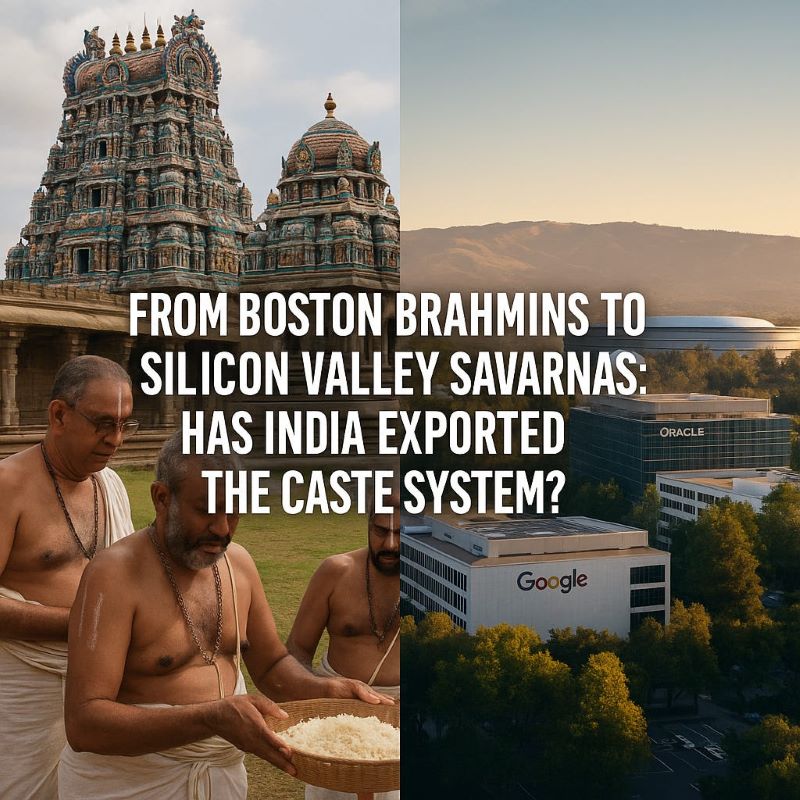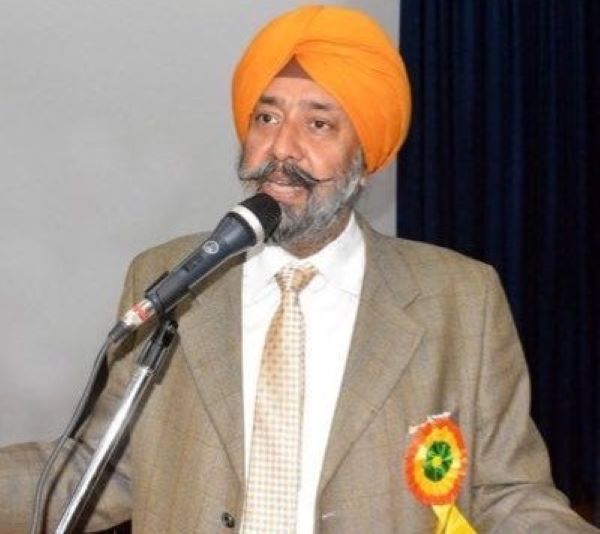 When Peter Navarro recently accused “Brahmins” of profiteering, the comment sparked outrage in India as casteist—prompting Trinamool Congress MP Sagarika Ghose clarified that he was likely referring to the “Boston Brahmins”, America’s old elite, rather than India’s caste community. Navarro’s charge stemmed from the claim that India’s elite families were profiteering from discounted Russian oil—refining crude bought cheaply from Moscow and exporting products at a premium—an arrangement he cast as central to Donald Trump’s tariff grouse against India. The storm showed how easily caste, metaphor or otherwise, resurfaces in global conversations, recast and re-imported in new guises.
When Peter Navarro recently accused “Brahmins” of profiteering, the comment sparked outrage in India as casteist—prompting Trinamool Congress MP Sagarika Ghose clarified that he was likely referring to the “Boston Brahmins”, America’s old elite, rather than India’s caste community. Navarro’s charge stemmed from the claim that India’s elite families were profiteering from discounted Russian oil—refining crude bought cheaply from Moscow and exporting products at a premium—an arrangement he cast as central to Donald Trump’s tariff grouse against India. The storm showed how easily caste, metaphor or otherwise, resurfaces in global conversations, recast and re-imported in new guises.
From Boston to Silicon Valley
That was precisely the theme I explored in my article published on 26 July 2025: “From Boston Brahmins to Silicon Valley Savarnas: Has India Exported the Caste System?” Sub-titled “How a borrowed metaphor has come full circle as caste resurfaces in boardrooms, DEI frameworks, and diaspora tensions across the globe”, it examines how caste—once thought of as India’s burden—is now a live issue in the corridors of global corporations and diasporic politics. In light of Navarro’s controversial remarks, his fixation on Russian oil trade, and Sagarika Ghose’s clarifying comment, my reflections on this cross-continental metaphor feel more urgent than ever.
Boston Brahmins: It’s Not Just Neologism or Etymology
On a short visit to the United States this year, I stumbled upon the phrase “Boston Brahmins” on social media. I first assumed it was a cheeky, one-off usage—someone being clever for effect. Only later did I discover that it was anything but new: the term has deep historical roots, evoking a self-conscious patriciate of old Boston families steeped in wealth, learning, civic duty and a certain froideur.
A Sacred Metaphor Borrowed, Not Inherited
Oliver Wendell Holmes Sr. chose “Brahmin” because it signified ritual purity, priestly authority and intellectual custodianship in India. Transplanted to Beacon Hill, the word shed theology but retained hierarchy: pedigree as piety, philanthropy as ritual, refinement as rite. The metaphor’s sting lay in its suggestion that some Americans were, by birth and breeding, ordained to guide the nation’s mind and morals.
From Metaphor to Migration: When Caste Stops Being Figurative
Fast-forward to the twenty-first century. Globalisation has transported not just engineers and entrepreneurs but also embedded social codes. The caste system—active or passive, overt or whispered—has crossed oceans. What once served Boston as metaphor now appears in Silicon Valley as lived experience: Dalit and Scheduled Caste professionals recount exclusion, subtle gatekeeping and outright harassment from dominant-caste peers who replicate hierarchies in project teams, hiring loops and informal networks.

The Meritocracy Myth Meets Reality
The United States likes to imagine itself as the world’s most merit-based society. Yet the very need for Diversity, Equity and Inclusion (DEI) initiatives betrays persistent blind spots—blindness to race yesterday, to disability and gender today, and, increasingly, to caste tomorrow. A CV may be anonymised, but surnames, temple affiliations, alumni WhatsApp groups and language cliques can still encode caste cues. If policy is colour-blind but culture is caste-aware, meritocracy becomes an elegant fiction.
Corporate Policies: Naming the Problem or Folding It Away
Some technology giants have begun to grapple with caste, but unevenly. One route is explicit—adding “caste” to codes of conduct, training HR to recognise its signals and tracking outcomes. The other is evasive—folding caste into ancestry or national-origin clauses and insisting that is enough. The difference is not semantic; it shapes whether victims feel seen and whether perpetrators feel warned.
The Other Side of the Debate: Reverse Discrimination?
While discussions on caste bias within the diaspora rightly focus on the historical and ongoing marginalisation of Dalits and Scheduled Castes, a quieter narrative is also taking shape. Many individuals from so-called “high-caste” backgrounds—often implicitly identified as Brahmins—both in India and abroad, are beginning to voice a growing, if discreet, unease. They contend that in the wake of expansive reservation policies in India, and the adoption of Diversity, Equity and Inclusion (DEI) frameworks in the United States, as well as “equal opportunity” paradigms across the U.K. and Europe, their caste identity has shifted from being an unspoken privilege to becoming a silent liability. In corporate boardrooms and political appointments, they allege being subtly passed over—not due to any lack of competence, but because their perceived social advantage now renders them “overrepresented,” and therefore dispensable.
While these claims are largely anecdotal and lack rigorous empirical support, they cannot be casually dismissed. The tension between historical justice and contemporary perceptions of fairness is real—and growing more complex as caste consciousness globalises.
When the State and City Step In
Regulators are feeling their way too. High-profile lawsuits over alleged caste harassment in California show that state authorities can pursue such cases under existing civil-rights statutes. Meanwhile, cities like Seattle have explicitly outlawed caste discrimination, even as other jurisdictions hesitate—arguing that naming caste merely duplicates protections already in law. The debate echoes an old American tension: do you tackle harm by universal principle or by naming the specific wound?
India’s Persistent Paradox: Reservation, Census and Social Reality
Back in India, the caste question is anything but settled. Affirmative action—caste-based reservation in education and public employment—remains both lifeline and lightning rod. Periodic demands for a nationwide caste census surface because policy without data is politics by guesswork. Yet numbers alone cannot dissolve centuries of stigma. Legislation to level the field coexists with matrimonial ads sorted by sub-caste and with social media outrage whenever upper-caste privilege is challenged. The state may redistribute seats; society still hoards status.
Egalitarian Faiths, Human Frailties
Sikhism, in doctrine, annihilates caste: langar, pangat and the Guru’s word reject hierarchy. Still, endogamous biradaris, separate gurdwaras in some districts and status-conscious matrimonial choices reveal sociologically ingrained custom outlasting scripture. Within India’s vast Muslim population, caste-like stratifications—Ashraf, Ajlaf, Arzal—shape marriage markets and social mobility, despite Islam’s insistence on equality before God. Ideals proclaim oneness; practice stratifies the community.
Ambedkar’s Unfinished Revolution
Dr. B. R. Ambedkar warned that political democracy without social democracy is a house on stilts. His call for the “annihilation of caste” demanded nothing less than a cultural and intellectual reformation—discarding the doctrines that sanctify hierarchy. He wielded law as a lever but never mistook law for liberation. The persistence of caste in India’s villages, its mutation in its cities, and its quiet reappearance in diasporic boardrooms suggest that the architecture he sought to demolish has merely remodelled itself.
Closing the Circle: From Beacon Hill to Bay Area—and Back Again
So we return to “Boston Brahmins”: a metaphor first coined to describe an American elite by borrowing India’s most rarified caste. Navarro’s careless invocation of “Brahmin profiteering” over discounted Russian oil triggered a mini caste storm in India, but it also reminded us how such metaphors travel—and boomerang. Today, as caste logics move from Chennai to Cupertino, hierarchies adapt, migrate, and disguise themselves as merit or tradition. If the United States can wear caste in Silicon Valley and India cannot shed it despite reservations, caste censuses and egalitarian creeds, what will finally uproot it? Will the annihilation of caste that Dr B. R. Ambedkar envisioned arrive in our lifetime—or will “Boston Brahmins” remain a clever mirror reflecting how new worlds keep inheriting old orders?